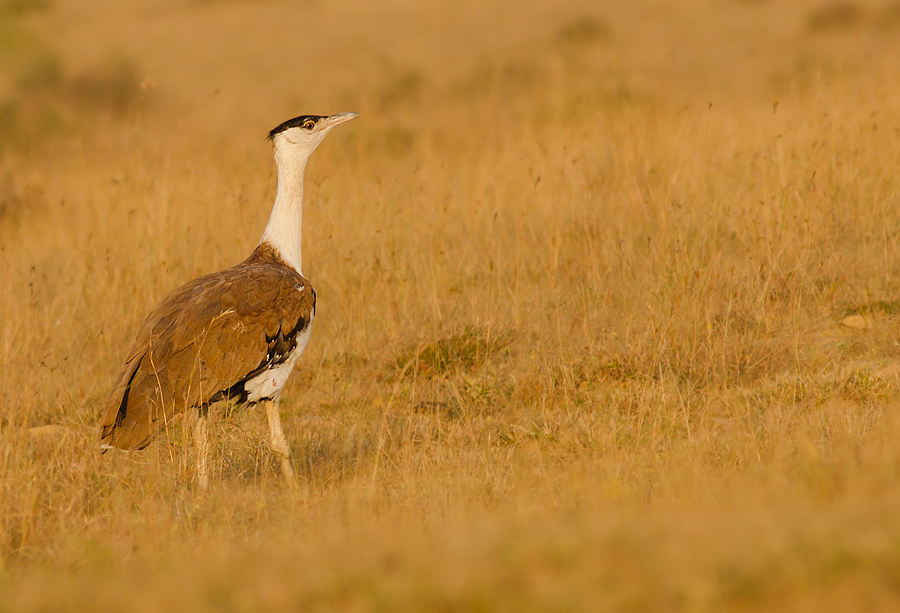Reports that only a single male Great Indian Bustard survives in Gujarat's Kutch district have been confirmed by experts, leaving it on the brink of extinction in the state.
During the last census in 2016, the forest department had counted 25 birds in Gujarat, mostly in and around the Great Indian Bustard sanctuary in Kutch and at that point of time, four males had been recorded. But since then, three have disappeared and environmentalists believe they most likely died in a collision with the power lines. With just one male left, the situation of the species has become even more precarious as the birds are notoriously shy and breed once every two years. The single remaining male is a sub-adult, not yet of breeding age.

Great Indian Bustard is now on the verge of extinction in Gujarat, while populations continue decline across its core range in Rajasthan (Prajwalkm / commons.wikimedia.org).
Sutirtha Dutta, a scientist and bustard expert at the Dehradun-based Wildlife Institute of India (WII) told Down To Earth: "Breeding in the area has stopped because there are no mature males left. We could bring this sub-adult into captivity but that is not possible right now, as the captive breeding programme for the bustard – to be conducted jointly by the Rajasthan government, the Union Ministry of Environment, Forest and Climate Change and the WII – has not yet started. Hence, proper captive facilities are not available right now.
"Formalities will be completed this month and things will start moving, but it will be a year until proper captive breeding facilities are built. Until then, we can only hope that this bird grows up and does not fall prey to power lines.”
Rajasthan, to the north of Gujarat, now holds the key to the survival of Great Indian Bustard. Though it still has around 100 bustards, it has been losing an average of 18 birds to power lines every year. The problem of the power lines for birds has become increasingly prominent as development continues and grasslands become increasingly fragmented. Plans are afoot to shift the wires underground in critical areas, while bird diverters can be installed to make the lines more conspicuous and give the bustards time change their flight path. However, conservationists fear that such measures have come into play too late.
No comments:
Post a Comment